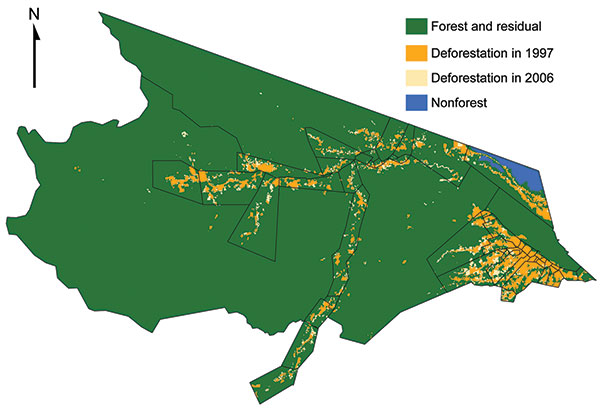Volume 16, Number 7—July 2010
Research
Deforestation and Malaria in Mâncio Lima County, Brazil
Figure 2

Figure 2. Deforestation trends in Mâncio Lima, Brazil, based on PRODES (Programa de Cálculo do Desflorestamento da Amazônia) 60 × 60–meter classified satellite imagery. The health districts are outlined in black. Baseline deforestation that occurred in 1997 is orange, deforestation that occurred between 1997 and 2006 is light brown, nonforested land is blue, and forested land is green.
Page created: March 02, 2011
Page updated: March 02, 2011
Page reviewed: March 02, 2011
The conclusions, findings, and opinions expressed by authors contributing to this journal do not necessarily reflect the official position of the U.S. Department of Health and Human Services, the Public Health Service, the Centers for Disease Control and Prevention, or the authors' affiliated institutions. Use of trade names is for identification only and does not imply endorsement by any of the groups named above.